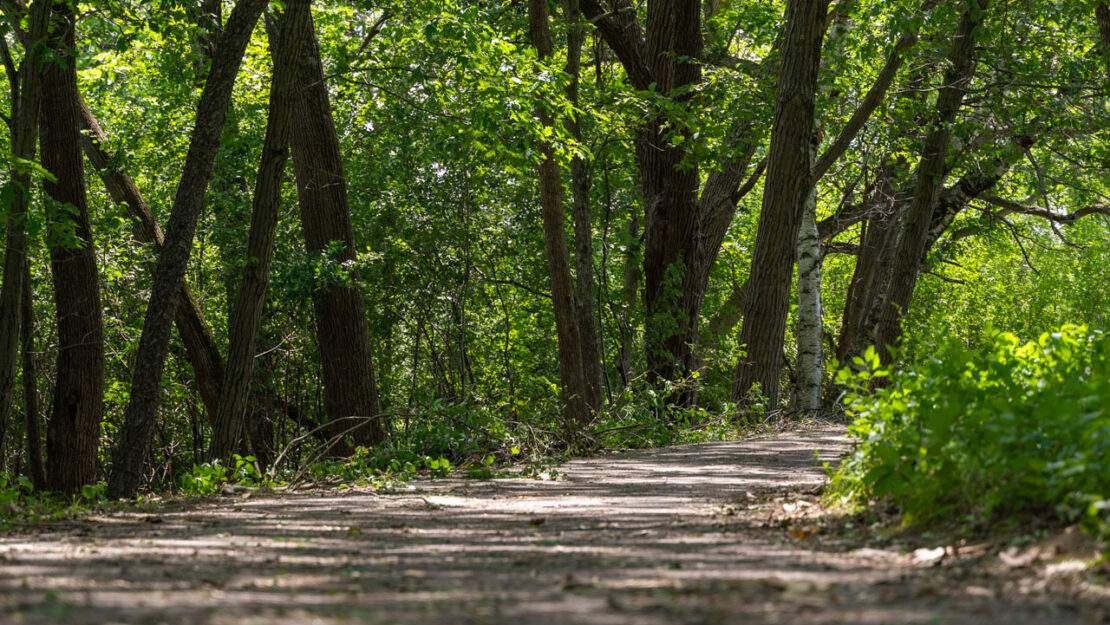Trail Safety Tips: Enjoying Nature Responsibly

By Sommer Meyer, Central Field Specialist / AmeriCorps Member
Going on a hike is a great way to enjoy the beauty of nature! You can go on a slow stroll and appreciate the scenery around you, or you can go on an exhilarating, endurance-testing trek over rugged terrain. However you like your hikes, there is always one vital component: returning safe and sound at the end. To help you enjoy the trails safely and responsibly, here are some tips to make sure you, and anyone or anything around you, don’t get harmed:
Stay hydrated: The number one thing to remember while doing any kind of outdoor activity is to STAY HYDRATED! Make sure you pack enough water to drink while hiking – the amount you will need is dependent on the duration and difficulty of your hike, the weather forecast, and your own physiology. Drink water regularly; if you are feeling thirsty, you are already dehydrated! Additionally, try to stay away from soda or energy drinks – they will actually make you more dehydrated. Also keep in mind not to over-hydrate, as drinking too much water may imbalance your sodium levels. Learn more about how to stay hydrated on the trail here.
Bring a Snack: If you will be hiking for more than an hour, make sure to pack a trail snack. Again, the amount of food you will need will change depending on how long you are out, how intense your route is, and your own body.
Listen to Your Body: Your body knows what it needs! Take breaks when your body is telling you too; pushing yourself past your limits can result in serious injury. If a route is starting to feel too challenging for you, there is no shame in turning back!
Wear (and Reapply) Sunscreen: The sun gives life to our planet, but it can also be harmful. Even if you are not prone to sunburn, the UV rays can still harm your skin. Developing skin cancer may be life-altering or even life-threatening. It is recommended you reapply sunscreen every 2 hours to ensure UV protection. You can read more about sun safety while hiking here.
Be Wary of Bugs: Ticks can carry a whole host of diseases, and mosquitoes can be just as dangerous. Make sure you pack your insect repellent or treat your hiking clothes in permethrin before you go! Additionally, keep an eye out for stinging insects such as wasps.
Know the Flora and Fauna: While you don’t need to have comprehensive knowledge on every little thing growing around you, it’s important to be able to identify and steer clear of potentially harmful plants and animals. Plants like poison ivy or poison oak can ruin your day (or week) with just one brush up against it. Research what predatory animals may be present in your area and what to do if you have an encounter. Finally, do NOT eat anything you find along the trails unless you are 110% confident you can identify it and know that it’s edible.
Plan Your Route: Know where you are going ahead of time. Make sure there is a map available in case you get lost, and find some landmarks that can tell you where you are. Know how difficult a route will be before you attempt to hike it.
Have the Right Gear: Bring the appropriate gear for the difficulty and duration of your hike. Wear clothes and shoes that will be comfortable and won’t hinder your ability. If going on an extended trip, be sure to pack all the necessary camping gear.
Leave a Trip Plan: Create a trip plan and leave it with someone who is not going with you. Your trip plan will include where you are going and when you expect to return. If you get lost or injured while hiking, your trip plan will help the person you left it with and the authorities to find you. The National Park Service has a template for a trip plan available here.
Make an Emergency Plan: If you get lost or injured on your hike, it’s important to be able to do what you can to help yourself. By creating an emergency plan, you will familiarize yourself with what to do in the event of an emergency. Additionally, creating a plan will help reduce panic and decrease the amount of time it takes to respond to emergencies. The National Park Service has a template for an emergency plan, as well as more information on what to do if you get lost or injured, here.
Staying safe on the trails is the most important thing while hiking! With these tips, you can go on your trip more prepared, and return happy and healthy when you are finished! For a more in-depth look at staying safe while hiking, check out the National Park Service’s “Hike Smart” page!